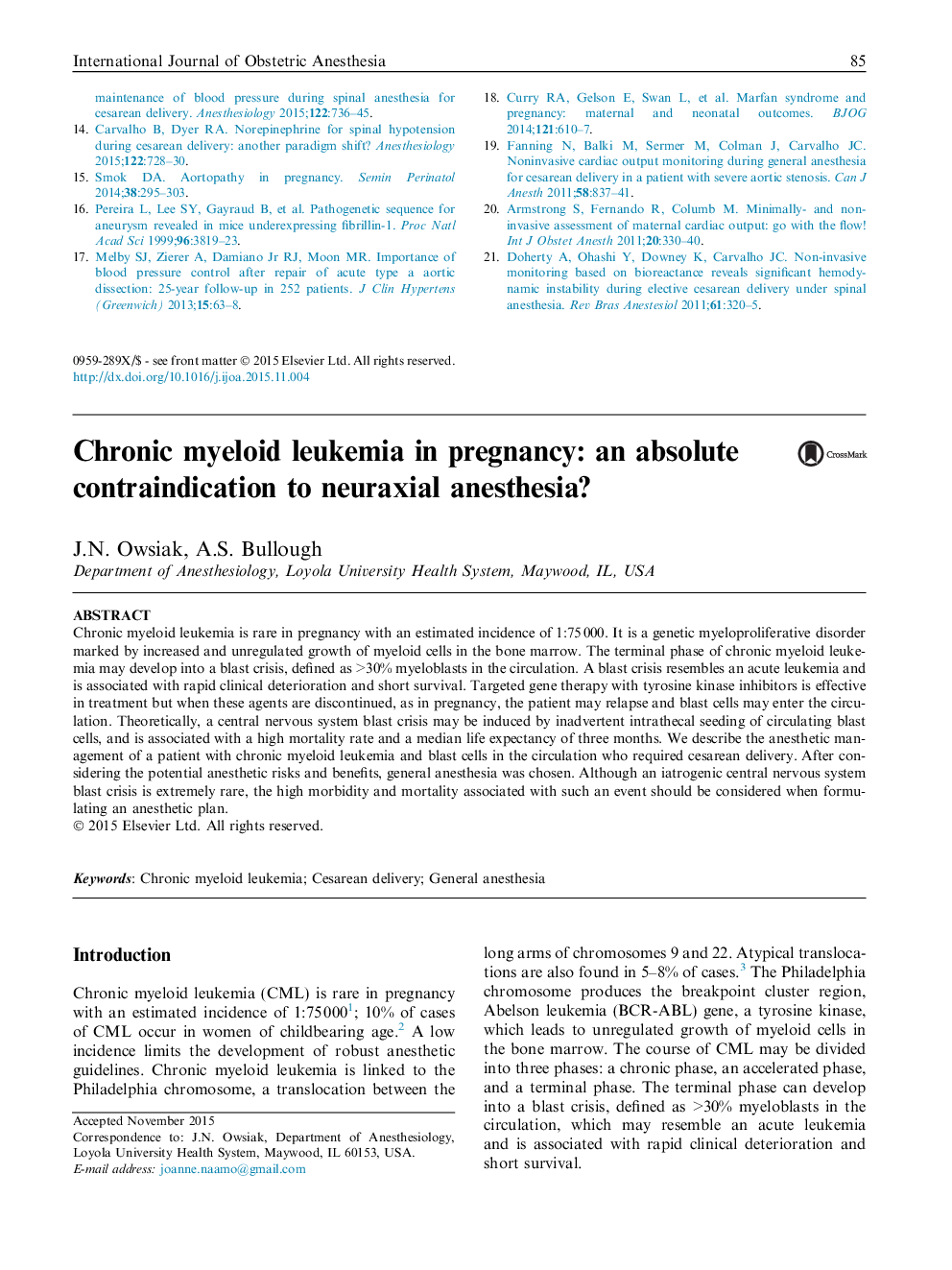| Article ID | Journal | Published Year | Pages | File Type |
|---|---|---|---|---|
| 2757466 | International Journal of Obstetric Anesthesia | 2016 | 4 Pages |
•Chronic myeloid leukemia in pregnancy is rare.•Poorly controlled chronic myeloid leukemia may lead to the presence of circulating blast cells.•Neuraxial anesthesia may cause central neurological blast cell seeding.•A central nervous system blast crisis is associated with a high mortality rate.•A multi-disciplinary approach to assist with anesthetic planning is vital.
Chronic myeloid leukemia is rare in pregnancy with an estimated incidence of 1:75 000. It is a genetic myeloproliferative disorder marked by increased and unregulated growth of myeloid cells in the bone marrow. The terminal phase of chronic myeloid leukemia may develop into a blast crisis, defined as >30% myeloblasts in the circulation. A blast crisis resembles an acute leukemia and is associated with rapid clinical deterioration and short survival. Targeted gene therapy with tyrosine kinase inhibitors is effective in treatment but when these agents are discontinued, as in pregnancy, the patient may relapse and blast cells may enter the circulation. Theoretically, a central nervous system blast crisis may be induced by inadvertent intrathecal seeding of circulating blast cells, and is associated with a high mortality rate and a median life expectancy of three months. We describe the anesthetic management of a patient with chronic myeloid leukemia and blast cells in the circulation who required cesarean delivery. After considering the potential anesthetic risks and benefits, general anesthesia was chosen. Although an iatrogenic central nervous system blast crisis is extremely rare, the high morbidity and mortality associated with such an event should be considered when formulating an anesthetic plan.
